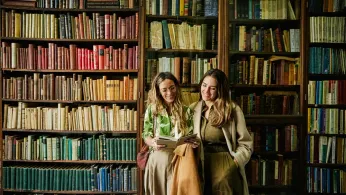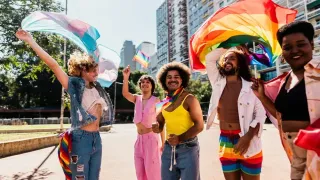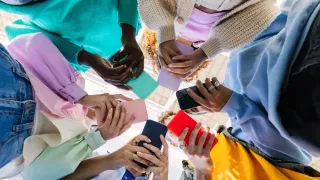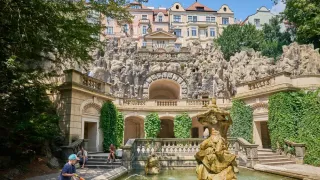
3 hours ago
Beyond the Bar: How Queer Third Spaces Are Reshaping LGBTQ+ Community
READ TIME: 4 MIN.
If you ask anyone to picture a “queer space,” chances are the disco ball spins to mind: a thumping bar, a legendary club, a drag night where the only thing louder than the music is the laughter. But what happens when the last call rings out—not just for the night, but for the very idea of the bar as our communal hearth? Across cities and small towns, LGBTQ+ folks are carving out a new kind of gathering ground: queer third spaces. Forget sticky floors and rainbow cocktails—think cozy bookstores, sober cafes, craft nights, and sun-dappled community gardens where the only thing intoxicating is the sense of belonging.
The End of the Bar as the Be-All and End-All
Historically, queer bars and nightclubs have been more than just watering holes—they’ve been sanctuaries, protest headquarters, and living archives of our stories. When same-sex relationships were criminalized and anti-LGBTQ+ violence rampant, these spaces offered rare shelter and freedom to simply exist, flirt, and celebrate without fear . “For decades, gay bars and clubs have been sanctuaries for many in the community to build camaraderie, foster a sense of belonging, develop social mobility, and create relationships around shared experiences,” notes the Capital Region Council of Governments .
But times—and tastes—are changing. While the value of nightlife is undeniable, many LGBTQ+ people are hungry for spaces that aren’t organized around alcohol, loud music, or a narrow vision of queer experience. The closure of beloved venues like Tisane Euro-Asian Café, a queer safe space for 24 years, highlights both the fragility of these institutions and the urgent need for alternatives .
A Third Way: Sober, Creative, and Radically Inclusive
Enter the “third space.” Sociologists define these as the social environments that are neither home (first space) nor work (second space)—think libraries, parks, co-ops, and, increasingly, queer-friendly cafes and bookstores . These venues are springing up to fill the gaps left by the old guard, providing “vibrant spaces where identity can be explored and expressed openly,” as one recent analysis put it .
It’s not just about who owns the space, but how people use it. “Queering space creates conditions for transgressing what are seen as fixed categories—such as gender and sexuality, or in some cases, intersections of racial and ethnic identities—that we do not necessarily see in the dominant culture,” says architectural theorist Andrew Chusid . In other words: a queer third space isn’t just a place where LGBTQ+ people hang out, but a place where we actively reimagine what community can mean.
Bookshops, Beanbags, and Belonging
Consider the rise of queer-owned bookstores hosting zine workshops, book launches, and sober open mics—spaces where the latest sapphic poetry collection shares shelf space with community-made pronoun buttons. Or the sober café that doubles as a knitting circle, offering a soft landing for those in recovery or anyone who just wants to meet queer friends without the pressure of drinking.
In Seattle, for example, a flourishing of queer third places—from parks to cafes to community centers—has been credited with keeping the city’s “gayborhood” spirit alive even as bars come and go . “What holds them together is that they’re accessible, accommodating to all, and on neutral ground,” writes Seattle Gay News, spotlighting the need for spaces that welcome every letter of the LGBTQIA+ alphabet.
Radical Rest and Resistance
These new gathering places do more than provide a table and a latte. They are sites of healing, activism, and radical imagination. “They are where we gather to dream, to create, and to heal together... spaces where we can sow the seeds of a more just, compassionate, and collective future,” writes Sweet Rain Healing, a queer wellness platform . Whether it’s a yoga studio centering trans and nonbinary bodies, a community garden run by queer volunteers, or a craft night that doubles as a mutual aid hub, these third spaces are “incubators for new possibilities,” challenging the norms that keep us divided.
They also reclaim agency over bodies often policed or commodified elsewhere. “Third spaces rooted in practices of healing and embodiment offer an opportunity to reclaim agency over our bodies and our right to simply *be*,” notes Sweet Rain Healing . In a world where so many public spaces are surveilled or privatized, creating queer third spaces is itself an act of resistance.
Not Just a Trend—A Blueprint for the Future
The emergence of these spaces is not a fad, but a response to real needs. As queer people age, become parents, or simply tire of nightlife’s relentless pace, their vision of community evolves. “Queer people, like everyone, do not adopt a single identity their entire life... as queer people marry and/or become parents, or age out of prime cruising years, the nature of their queer space will change,” notes Chusid .
Third spaces are also crucial for those who have felt excluded from traditional queer venues—transgender people, people of color, disabled folks, and anyone who doesn’t see themselves reflected in the classic “gay bar” mold . By centering accessibility, intersectionality, and radical hospitality, these places affirm: “You belong. Your body belongs.”
From Margin to Mainstage: The Queer Third Space Revolution
As the fight for safe, inclusive, and joyful spaces continues, queer third spaces are leading the way—not by replacing bars and clubs, but by broadening the map of queer possibility. They’re places where you can show up as you are, whether you’re a baby gay, a grizzled activist, or just someone who wants to read queer comics and eat vegan pastries in peace.
So next time you’re looking for your people, don’t just follow the rainbow flag to the nearest bar. Check the community noticeboard for a queer craft night, a sober poetry slam, or a radical garden workday. You might just find that the heart of queer life beats loudest in these “magical in-betweens”—the third spaces where we gather, dream, and belong.






